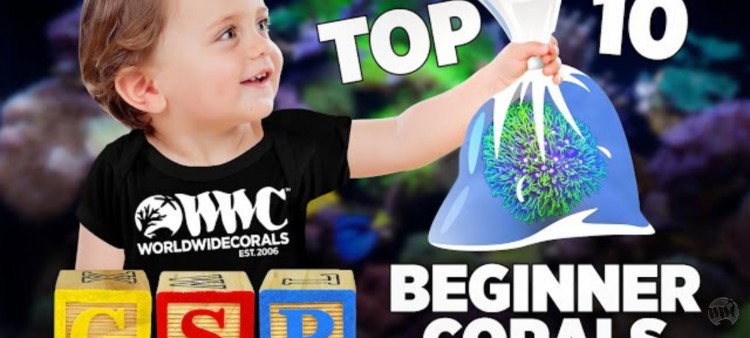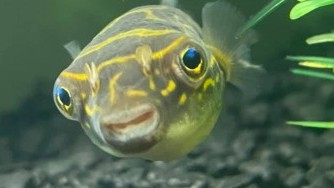Top 10 Corals for Beginners
- Mar 20, 2022
- Anshika Mishra
- 210 0 0

Welcome to the top ten list of the easiest corals to keep in a reef. Soft coral and mushrooms are known for being hardy. They do not require any dosing to promote growth, and they need little to no monitoring besides water changes, lighting, and flow.
If this is your first reef tank, then these are the corals for you:
10. Ricordea Mushrooms
These corals come in an amazing variety of colors and fluoresce nicely under blue lighting. However, Ricordea mushrooms prefer low light.
The sweet thing about these corals is they can be arranged in a tight group together where they are touching each other. Then, glue them to a hard surface or near the bottom of a reef tank.
They like to be target fed a couple of times a week which will help increase their color intensity and growth rate.
These are slower-growing corals. So, you don't have to worry about them taking over the tank.
9. Green Star Polyps
These are renowned in the aquarium hobby for their colors. Depending upon the morph, they will be fluorescent under blue light and look amazing under full-spectrum lighting.
They provide plenty of movement and look like an amazing sexy shag carpet as they grow into larger colonies. In addition, they do not require any target feeding.
You can glue them at the back of your reef and get an amazing backdrop full of color. Just be careful because they can quickly take over your reef.
Some might stay away from them because of their invasive reputations. However, it is a very gratifying coral for a beginner hobbyist because of this growth rate and the ability to cover a good amount of real estate.
If you like to keep them from taking over your reef, you will want to isolate them on their own rock.
8. Zoanthids
These corals do extremely well in more nutrient-rich water. In addition, there is an almost unlimited amount of color morphs to choose from. Some hobbyists even keep Zoa only reef tank.
They like to feed on food like reef roids, amino, or small meaty food.
Some morphs require higher lighting where they will begin to stretch for light. That's why placement is key.
It looks amazing as they butt off and grow into larger colonies. Also, consider contrasting colors, which will create a more diverse palette.
7. Toadstool Leather
These are one of the first species of aquarium corals.
You can find them in a few different colors, including a green that pops in blue lighting. Also, some varieties have long sweeping polyps, while others have short.
They are quick growers and require sufficient lighting and medium flow. These corals can be placed anywhere in the tank, and the base will attach to your rock.
Be sure to attach it to a smaller rock if you want to move them in the future. Be careful, as most corals can irritate neighboring corals by producing toxic mucus.
The best place for them would be in strong lighting on the edge of a rock structure or off to the side of the tank. Keep in mind that this coral will periodically withdraw their tentacles and shed a layer of tissue, sometimes turning brown and coming back better than ever.
6. Nepthera & Sinularia
These are two soft corals that are similar to stay leathers. They go well together to produce a nice contrast in the reef tank.
Like the Toadstool, they have a very irritating touch to their tank mates. They will add nice movement, and they do not require target feeding.
The best part of a Nepthera is that they create vertical structures without impeding lights to the corals below. Medium lighting and flow are fine; they may not grow quickly, but they usually take off once established.
5. Sympodium
If Green Start Polyp grows too fast for you, this is a good coral to consider. It is like a blend of green start polyps and leather corals together. It will add some movement and florescent your tank under blue lighting while looking incredible under the full spectrum.
You can use these corals to fill in or break up contrasts between corals. They will grow as encrusting mats and do not need high lighting or flow.
You don't have to target feed them, making them easy to keep in a reef tank.
This is one of the most forgiving corals there is. Therefore, best for new reefers.
4. Hairy Mushrooms
These have the most movements of any Mushroom species as they have long tentacles. They look great under alternative flow or wave mode.
They do well if you target feeds them small meaty pieces of food.
These corals have a few color morphs, including green, lavender, and gold.
Keeping them on separate rocks or islands is recommended as they multiple quickly under the right conditions, making this another gratifying addition.
Often, when these corals colonize, they can become a cozy place for your clownfish to warm up. These mushrooms are an excellent host to make a good solution to those who are gun shy about having an Anemone in their aqaurium.
3. Cespitulria
Adding this coral is a great way to keep green or blue corals in your reef tank, as most easy-to-keep corals are green or brown.
These corals look their best in a full spectrum lighting environment. They prefer low to medium flow and do not require target feeding.
This coral will stand out from the crowd in an aquarium full of soft corals. If the only thing in the aquarium was Cespitulria and Anthelies, and the flow was set to wave pulse, you will be an instant crowd, please.
2. Anthelia
These easy-to-care-for soft corals have long polyps and look great will a wave-like flow. They are most often a light purplish-brown color. They do not require much light or high flow, and you do not have to target feed them.
Just be careful as they can quickly outgrow any area you place them in, even take your entire reef if not isolated.
Their care can be compared to Cespitulria.
1. Pulsing Xenia
This is an extremely popular coral for beginners and looks amazing as a colony because every polyp will pulse as a filter feeds.
Do not place this coral up in your reef as they do not like flow or strong lighting.
Also, target feeding is not needed, making this the easiest coral on this list. However, they grow quickly and will take over a tank, so isolating them is the key.
Many people like to cover the overflow or the back wall with Xenia.






About author